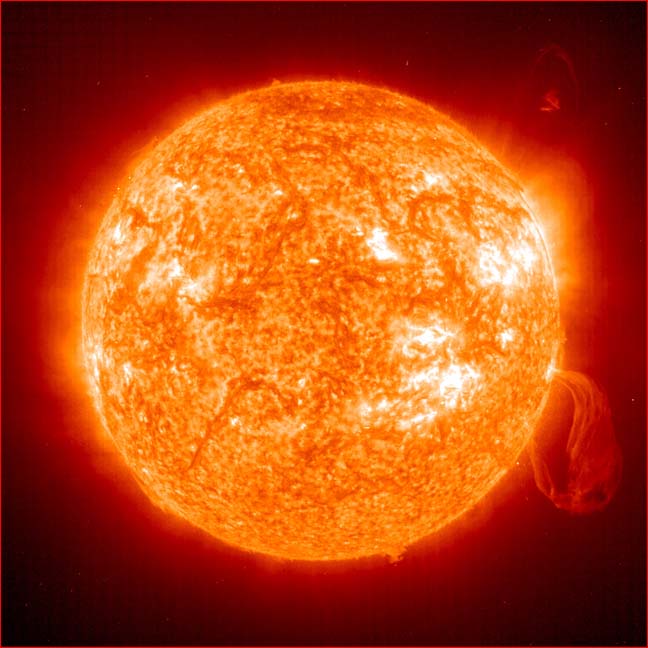
home •
about •
essential guide •
picture of the day •
thunderblogs •
news •
multimedia •
predictions •
products •
get involved •
contact

Credit: SOHO-EIT Consortium, ESA, NASA
pic of the day
archive
subject index
abstract
archive
Links:
Society for
Interdisciplinary
Studies
Jan 10, 2005
Electric Stars in Action
From an Electric Universe point of view, some stars are formed in a "pinch." Large magnetic fields have been detected in galaxies, and these fields indicate that huge electric currents flow in circuits through the galaxies. These current-induced magnetic forces constrict the currents into filaments, twist the filaments around each other in spirals, and "pinch" the galactic plasma into balls, pulling in any matter in the neighborhood until the internal pressure balances the magnetic "pinching" pressure. This pinch effect is far more effective than gravity in gathering and concentrating matter. And, unlike gravity, it can remove angular momentum that tends to prevent collapse. Stars will form like beads along a galactic wire.
One possibility, popular in some plasma cosmology circles, is that once the material for a star is gathered and concentrated by the pinch, gravity takes over and squeezes the star until its interior lights up as a nuclear furnace, forming a conventional nuclear star.
In the 1970's, the late Ralph Juergens, an engineer from Flagstaff, Arizona, took the next mental leap to suggest that the electrical input doesn't stop when a star is formed. In fact, stars are both sparked and powered by the same electric currents. Stars behave as electrodes in a galactic glow discharge. Bright stars like our Sun are concentrated balls of lightning! The many surface phenomena we see on the Sun (see SOHO image above) such as the hot corona, sunspots, prominences, flares, and granules are all explained by an electrically driven Sun, but are difficult to understand from the nuclear furnace point of view. Even the nuclear reactions whose neutrino traces we see (although not in the quantities predicted by the nuclear theory) are explained by electric stars. Nuclear reactions take place on the surface, not in the core, of the Sun, explaining why neutrino numbers vary with the sunspot cycle. Nuclear reactions are produced the same way we produce nuclear reactions in the lab -- by accelerating particles in an electric field.
The matter inside stars becomes positively charged as the lighter electrons drift toward the surface, leaving the heavier positive ions behind. The resulting internal electrostatic forces prevent stars from collapsing gravitationally and occasionally cause them to "give birth" by electrical fissioning to form companion stars and gas giant planets. Sudden brightening, or a nova outburst, marks a fission event. That explains why about half of the stars have partners and why most of the giant planets so far detected closely orbit their parent star.
Electrical engineers and plasma cosmologists have a unique viewpoint based on their familiarity with the behavior and mathematics of plasma. Now that the space age has revealed the extent of plasma in the universe, it would behoove both sides to compare notes. Stars, galaxies, nebulae, and planets are all affected by electric currents in the plasma through which they move. There's a whole new universe waiting to be discovered.
Read more about Electric Stars and the Electric Universe at:
http://www.holoscience.com/synopsis.php
EXECUTIVE EDITORS:
David Talbott, Wallace Thornhill
MANAGING EDITOR: Amy Acheson
CONTRIBUTING EDITORS: Mel Acheson, Michael Armstrong, Dwardu Cardona,
Ev Cochrane, C.J. Ransom, Don Scott, Rens van der Sluijs, Ian Tresman
WEBMASTER: Michael Armstrong
Copyright 2005: thunderbolts.info